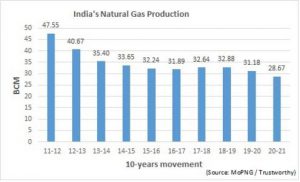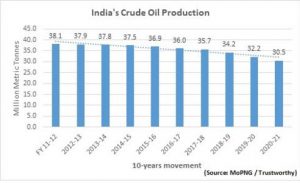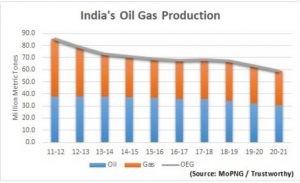INDIA’S OALP PUSHES OIL HUNT
1. In FY23-24 Q1, Oil & Gas discoveries announced in 3 OALP BLOCKS- two by ONGC and one by Vedanta Cairn. A good start.
2. India has opened almost entire sedimentary areas for oil hunt on liberalized terms under New Policy Initiatives such as Open Acreage Licensing Policy (OALP) and Hydrocarbon Exploration & Licensing Policy (HELP) since 2017.
3. Seven rounds of the auction conducted so far awarding 134 Blocks to 9 companies. 10 more blocks are undergoing bidding in eighth round, closing date for which extended till 5th July.
4. OALP is expected to accelerate oil hunt and discoveries. It will ultimately enhance production which is showing declining trend since last 10 years.
5. Out of 134 Blocks, 51 won by Vedanta Cairn, followed by ONGC 45, Oil India 29, Sun Petro three, Gail two and one each to Reliance-BP, IOC, BPRL, HOEC.
6. Five awarded blocks are ultra-deepwater, 2 deepwater, 24 shallow water and balance 103 onshore.
7. India has 26 sedimentary basins, but only seven have gone into on commercial production, named as category I basin. The remaining 19 sedimentary basins are in categories II and III.
8. To attract fresh investment, the new policy provides that the awardee will not have to share any production or revenue to the Government except royalty and statutory levies till the annual revenue exceeds US$ 2.5 billion in the Blocks in category II & III basins.
9. However, though 100% FDI is allowed in OALP and HELP, no Global giants such as ExxonMobil, Shell, TOTAL, PETRONAS, or Eni have shown any interest. Only one exception is BP in joint venture with Reliance for one Block. Reasons for their apathy need to be identified.
10. Similarly, though almost all PSU oil companies in India have participated, but among the Domestic private oil companies, response has come from only three viz. Vedanta Cairn, HOEC and Sun Petro.
11. One eligibility barrier is also there. Non-oil companies even if financially strong are not eligible as they do not meet the essential eligibility criterion of having already in Oil, Gas or CBM exploration or production. A review of criterion aligning with that for CBM under OALP may be useful for the wider participation by the private sector in the coming rounds for continuing oil hunt.
OIL HUNT IN OVER 200K SQUARE KM OF INDIAN BASINS
The contracts for 134 exploration blocks covering over 200K sq km approx. have been awarded to eight Companies so far under the new Open Acreage Licensing Policy introduced in July 2017.
Seven rounds of Open Acreage Licensing Bidding have taken place in less than five years. And the area of acreages awarded is double that awarded to 254 blocks under NELP rounds in ten years from 2000 to 2010.
The winners are private oil companies: Vedanta Cairn, Reliance -BP, HOEC, and SunPetro besides leading oil & gas PSUs Oil India, ONGC, IOC, BPRL, GAIL. The companies have to complete a committed work program of 2D/3D seismic surveys API and drilling of exploratory wells within three years. Out of 134 awarded blocks, 5 are in ultra-deepwater, 2 deepwater, 24 shallow water and balance 103 onshore.
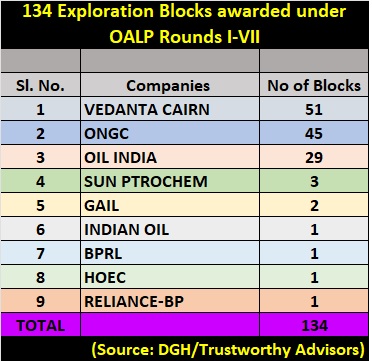
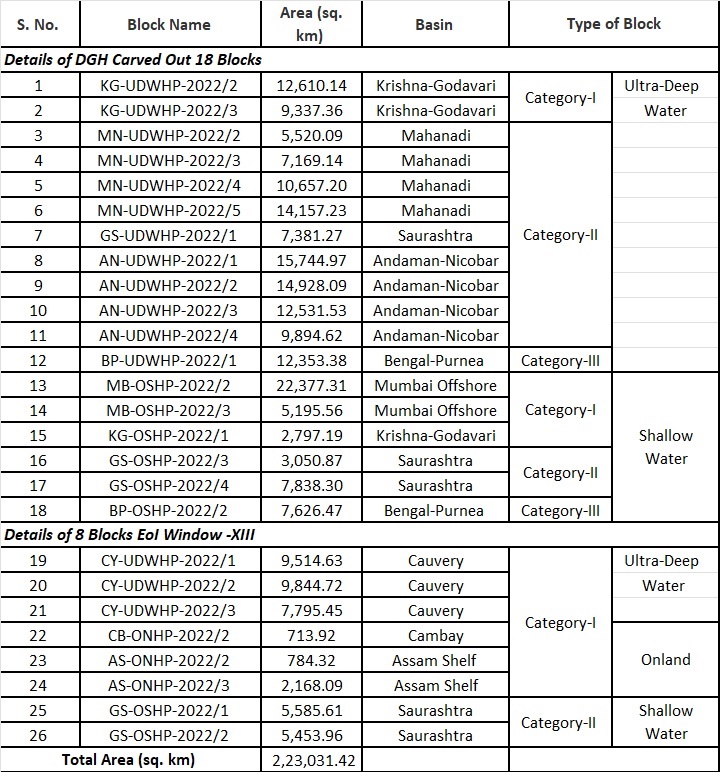
INDIA FURTHER LIBERALIZES NORMS FOR OIL EXPLORATION
After opening all 26 sedimentary basins for oil hunt, India has liberalised the terms of exploration licensing. If a licensee explores and discovers oil and gas in a basin where presently no commercial production is there, the licensee will not have to share any production or revenue to the Government except royalty and statutory levies till the annual revenue exceeds US$ 2.5 billion. At present out of 26, only seven basins (category I basin) are presently on commercial production. The bids for blocks in the remaining 19 sedimentary basins (category II and III) will be awarded exclusively on the basis of exploration work programme quoted by the bidders.
However, the bids for blocks in the producing seven basins will continue to be evaluated based on revenue sharing basis but the work programme will carry higher weightage of 70% weightage as against the present 45%. Below are the main highlights of the latest E and P policy reforms:
Increasing exploration activities in unexplored/unallocated areas.
In basins (Category II and II basins) where presently no commercial production is there, exploration blocks would be bid out exclusively on the basis of exploration work programme without any revenue or production share to Government. Royalty and statutory levies, however, will be paidbyContractor.
Incase of windfall gain, the Contractor would be sharing revenue with the Government on a graded scale ranging from 10% to 50% on incremental revenue over US$ 2.5 billion in a financial year.
For unallocated/unexplored areas of producing basins (Category I basins), the bidding will continue to be based on revenue sharing basis but with more weightage to work programme (70% weightage to work programme and 30% weightage to Revenue share). An upper ceiling of 50% on biddable revenue share at Higher Revenue Point (HRP) has also been prescribed.
The policy also provides for shorter exploration period: 3 years for onland/shallow water blocks and 4 years for deepwater blocks
To incentivize early production, concession in royalty by 10% in Category I basins, 20% in Category II basins and 30% in Category III basins will be given if production is commenced within 4 years for onland and shallow water blocks (upto 400 meters of water depth), and 5 years for deep water (beyond 400 meters but upto 1500 meters of water depth) / Ultra deepwater blocks (beyond 1500 meters of water depth) from the effective date of contract.
The contractor will have full marketing and pricing freedom for crude oil and natural gas to be sold at arm’s length basis through a transparent and competitive bidding process.
Marketing and Pricing Reform for Natural Gas
To incentivize enhanced gas production, marketing and pricing freedom has been granted for those new gas discoveries whose Field Development Plan (FDP) is yet to be approved.
Fiscal incentive in the form of reduced royalty rates by 10% is also provided on additional gas production from domestic fields over and above normal production under Business as usual scenario.
Production Enhancement Scheme for Nomination fields
To enhance production from existing large nomination fields of ONGC and OIL, enhanced production profile will be prepared by both PSUs. For production enhancement, and bringing new technology and capital, National Oil Companies (NOCs) will be allowed to induct private sector partners.
To increase production from marginal/ small nomination fields, two-fold actions are prescribed. Firstly, some of the fields will be allowed to be retained by NOCs based on objective laid down criteria. Forrest of the fields, NOCs will be allowed to induct private sector partners including by farming out, joint venture and bidding out. These selected fields will be geographically clustered and will be offered for bidding through international competitive bidding on revenue sharing basis.

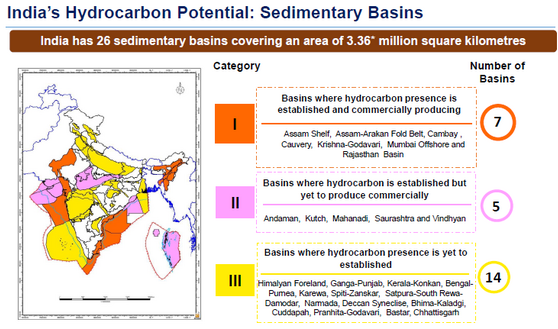
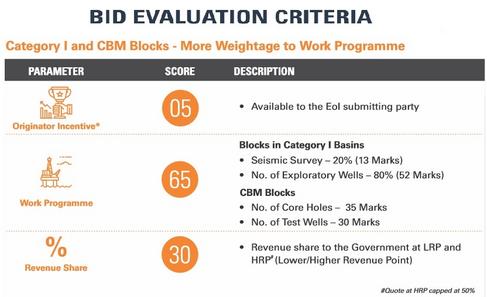
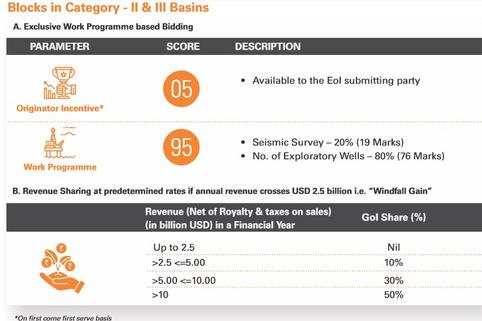
INDIA AWARDS 11 BLOCKS IN OALP ROUND - V
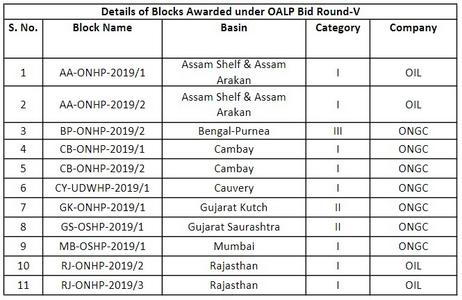
In the fifth bid round under Open Acreage Licensing Policy (OALP), ONGC won 7 blocks and OIL India 4 blocks. The bidding closed on June 30. 11 blocks based on Expressions of Interest received last year, were on offer in this bid round. The 11 blocks under OALP Round-V have together an area of approximately 19,800sq. km. spread across 8 Sedimentary Basins and include eight Onland blocks (six in Category-I Basin and one each in Category II and III Basins), two Shallow Water blocks (one each in Category-I and II Basins) and one Ultra Deep Water block (Category-I Basin).
12 bids were received for the eleven exploration blocks on offer. Only 3 companies participated. While ONGC submitted bids for 7 blocks and Oil India for 4 blocks, a private company Invenire Petrodyne has bid for one block. All blocks except one received a single bid. Only one block has got two bidders: ONGC and Invenire Petrodyne.
The Government of India has so far awarded 105 blocks under in rounds of bidding. Out of which, 51 went to Vedanta Cairn, 25 to Oil India, 24 to ONGC, one each to IOC, GAIL, BPRL, Reliance-BP, and HOEC. The contracts awarded cover 159K sq km of acreages.
The window for submission of the EoI for next round VI is open till November 30, 2020.
INDIA AWARDS 32 BLOCKS UNDER OALP-II & III
Global major BP Plc and its partner Reliance Industries (RIL) have jointly emerged as winners of a block in the east coast in the fresh round of auction under the open acreage licensing policy (OALP). This would mark the re-entry of RIL into domestic exploration and production business after it stopped bidding for acreages in India. RIL had last won a block during the seventh round of auctions under NELP (New Exploration Licensing Policy) in 2008. At present, RIL is operating in only four blocks in India.
Oil India (OIL) with 12 blocks has got the maximum number -– six each in the second and third OALP rounds. Vedanta-Cairn, country’s second-largest oil & gas producer too won ten blocks and Oil and Natural Gas Corporation (ONGC), the largest oil & gas producer got eight blocks. The only other company that won a block during the OALP-II and III rounds was Indian Oil Corporation (IOC).
37 blocks were on offer during the two rounds – 14 under OALP-II and 23 under OALP III. Though in total 72 bids were received, no bids were received for 5 Blocks.
Out of 14 Blocks under OALP-II, eight are in on-land, five in shallow water and one is in ultra-deepwater. Out of 23 blocks that were on offer under OALP-III, 19 are in Onland (including five CBM), three in Shallow Water and one is in deep water.
The bidding rounds are under the liberalized terms of the Hydrocarbon Exploration Licensing Policy (HELP) that ensures reduced royalty rates, no oil cess, uniform licensing system, marketing and pricing freedom, revenue-sharing model and exploration rights on all retained area for full contract life for bidders.
With the three rounds, the OALP regime has so far seen committed investments to the tune of around Rs 1.4 trillion. The coming years are likely to see accelerated activities by oil companies and oilfield service providers.
The process for the next bidding rounds on terms liberalized further is already on. Fourth Round of EoI submission closed on 15th May and bidding of the blocks likely to start soon.
Simultaneously, Fifth Round is now open for EoI submission. Almost 90% of entire sedimentary areas in the country is available for a pick by investors under the Open Acreage Licensing Policy (OALP). The investors are allowed to carve out their own areas and submit the EOIs for the same.
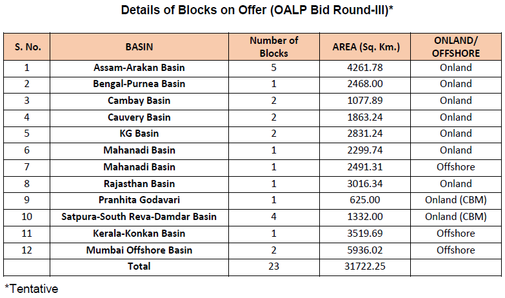
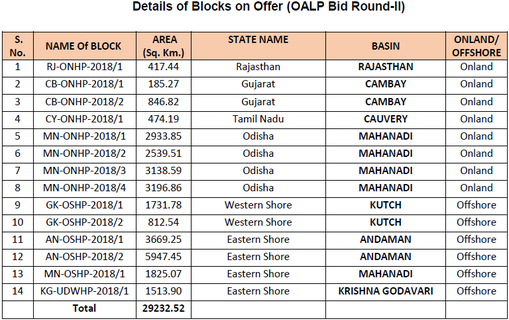
India opens almost entire sedimentary areas for oil hunt
India has opened almost entire sedimentary areas for oil hunt on liberalized terms under New Policy Initiatives such as Open Acreage Licensing Policy (OALP) and Hydrocarbon Exploration & Licensing Policy (HELP) since 2017.
Seven rounds of the auction conducted so far awarding 134 Blocks to 9 companies. 10 more blocks are undergoing bidding in eighth round, closing date for which extended till 5th July.
The Government has come out with far-reaching Policy Reforms notification. Under the new policy, the Government has classified the sedimentary basins into categories- I, II, III with different evaluation process of bids and terms of revenue sharing. For example, if a licensee explores and discovers oil or gas in a basin where presently no commercial production is there (category II and III), the licensee will not have to share any production or revenue to the Government except royalty and statutory levies till the annual revenue exceeds US$ 2.5 billion.
OALP ROUNDS - I , II, III & IV
India has opened almost entire sedimentary areas for oil hunt. In the Open Acreage Licensing Policy (OALP), the investors are allowed to carve out their own areas and submit the EOIs for the same. These blocks are then put on bidding in which other companies can also participate. The Bidder company should, however, have (a) one-year operatorship experience in exploration, development or production of Oil, Gas or CBM (b) either had acreage or producing assets and (c) the required financial net worth.
The Open Acreage Licensing Policy (OALP) was introduced in July 2017. In Round – I, 55 blocks covering nearly 60,000 sq. km. have already been awarded and contracted with six E&P Companies in October 2018.
With the success achieved in OALP Round I, the Government of India quickly launched the second and third rounds of auction almost concurrently. 14 blocks and 23 blocks are open to bidding in Round- II and III respectively covering acreages of another 60,000 square km. Out of total 37 blocks, five are coal-bed methane (CBM) blocks, 22 On-land blocks, eight in Shallow water and two in Ultra deep water. While bid submission in Round II which was to close on 12th March will now close on April 10, Round III will remain open till April.
Besides above, the Companies can look into Data of the remaining sedimentary areas to carve out their own areas of interest and submit the Expression of Interest (EOI) for the same by the 15th May to DGH, MOPNG. Thereafter, these blocks will be put on bidding in next OALP Round-IV.
In short, the oil hunt is going to commence in coming months in 92 blocks spread over 1,22,000 sq.km. Before the OALP, the earlier rounds took place till 2010 under the then existing licensing policy NELP leading to exploration in 90,000 square km.
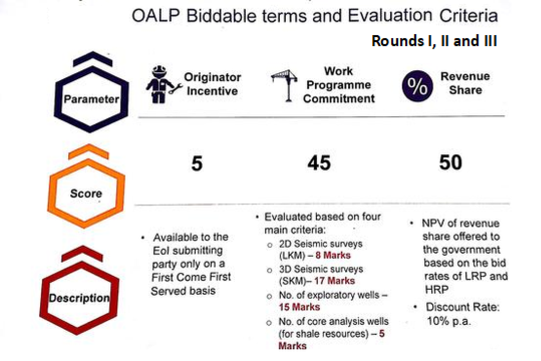
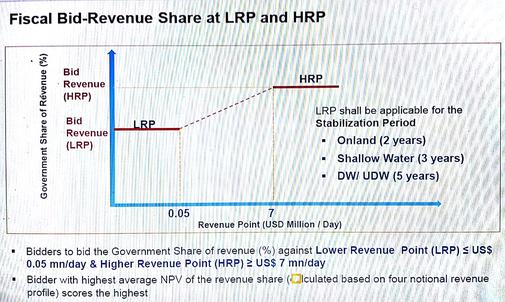
Trustworthy provides Domain Expert Services to Investors for OALP:
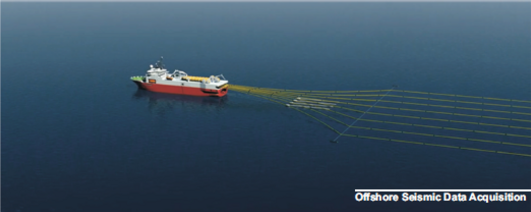
- Selection of acreage for EOI / Bidding for Blocks
- Review and interpretation of existing data at NDR
- Determination of Competitive and Viable Bidding Parameters
- Need-based optimal survey selection and parameter design
- Preparation of Tender document for oilfield service providers selection
- Quality Control during the execution of the survey
- Processing and Interpretation of acquired data
- Recommendation for future course of action

OFFSHORE BLOCKS CLASSIFICATION
Shallow water: Upto 400 meters of water depth
Deep water: Beyond 400 meters but upto 1500 meters of water depth
Ultra deep water: Beyond 1500 meters of water depth
India awards & Signed contract for 55 exploration acreages
Vedanta Cairn, India’s second largest producer of Oi & Gas, emerged the biggest winner of the exploration blocks, bagging three-fourth of blocks put on auction. Out of 55, it was awarded 41. It had placed bids for all the 55 blocks. Vedanta believes there’s a lot to unfold in the Indian geology. Its aggressive bidding reconfirms its confidence in Oil & Gas Sector. Cairn is globally known for its exploration expertise and may become a game changer for Indian oil and gas scenario.
The second winner is Oil India with 9 blocks, followed by ONGC with 2 blocks and GAIL, BPRL, and HOEC- one each.
The Government had invited bids for 55 blocks under Open Acreage Licencing Policy (OALP). The list of Awardees was released by the Government on the 28th August 2018 and the contracts between the Government and the Awardees was formally signed on 1st Oct, 2018.
The investment in exploration and drilling activities are likely go up substantially in coming years. For example, Vedanta Cairn has committed capital expenditure of US$550 million on the awarded blocks over a period of approximately three to four years.
BACKGROUND:
India opens almost entire sedimentary areas for oil hunt
On July 1, 2017 India commenced the first bidding round for oil and gas through an open acreage licensing program (OALP), allowing bidders to select where they want to drill. It also launched National Data Repository (NDR) which offers 160 terabytes of data on India’s 26 sedimentary basins; the vast data collected over last six decades by E&P companies and other agencies.
The interested parties can submit their expressions of interest (EoIs) for a particular area. That window will be open for three to four months or till November. Then the EoIs will be evaluated and bids invited. The blocks are likely to be awarded by the end of January 2018. The contract will be under new Hydrocarbon Exploration Licensing Policy (HELP).
The success of recently concluded Discovered Small Fields Bid Round under HELP has given confidence to the Government to come out with the auction of large exploration acreages also under the new policy.
India is now puting 90% of entire sedimentary areas in the country for a pick by investors under the Open Acreage Licensing Policy (OALP). OALP is a clear departure from the current licensing policy of government identifying the oil and gas blocks and then putting them on auction.
Under OALP, the bidders will have the choice of either a Reconnaissance Contract only for probing for Hydrocarbon or Petroleum Operations Contract for exploration, development, and production. The reconnaissance contract will be valid for three years and the petroleum operations contract will allow eight years for exploration and 20 years for development and production. There will also be an option to migrate from a reconnaissance contract to a petroleum operations contract after three years.
Out of India’s total sedimentary area of 3.14 million square kilometers spread over 26 sedimentary basins, the present offer is for 2.7 million square km, almost 90%. This comprises of 1.5 million square km of onshore and 1.2 million square km of offshore area. Presently, oil and gas production in India is only from 7 sedimentary basins. Half of sedimentary basins has remained unexplored. A sedimentary basin is an area in the Earth’s crust in which sediments have accumulated. Petroleum mainly occurs in sedimentary basins but need to be explored.
Investors will get access to the National Data Repository that offers 160 terabyte information on 26 sedimentary basins. In the NDR, sedimentary basins gridded into sectors and divided into zones with corresponding data are made available. The NDR is based on seismic and well data, and investors can identify areas with potential through this. About 100 companies, including some international oil explorers, have purchased data for the different sedimentary basins.
After studying the geological data, a prospective bidder can carve out blocks of his choice submit an expression of interest for the same. The block then will be put on auction. This prospective bidder will have to compete with other bidders in the auction though he gets a small additional weight vis-à-vis competitors during the technical evaluation process. The financial bids will be evaluated on the basis of revenue share offered to the Government and committed biddable Minimum Work Program, both caring equal weights. 51 expressions of interest (EoI) covering about 60,000 square kilometers have been submitted so far by domestic and foreign companies.
The auction of oil and gas blocks will be conducted twice a year, with the first round will be held in December this year.
A company or consortium of companies can bid. There are no technical qualification criteria for Reconnaissance Contract. But for bidding for Petroleum Operations Contract, the Bidder company must have one-year operatorship experience in exploration, development or production of Oil, Gas or CBM plus the required financial net worth.
The bidding will be under HELP, replacing NELP, the existing licensing policy under which 254 exploration blocks were awarded since 1997. This would be a major reform and may bring a sea-change in Oil Sector.
First, under HELP, the contractors will get a uniform license for exploration and production of all forms of hydrocarbon during the entire contract period. The uniform license will enable the contractor to explore conventional as well as unconventional oil and gas resources including CBM, shale gas/oil, tight gas, and gas hydrates under a single license. This makes a departure from the NELP wherein separate licenses were required for different types of hydrocarbons. As a result, contractors could not exploit the unconventional hydrocarbons even if found within the block, for want of the specific license. Now, the contractors will not need separate licenses for Oil, Gas, CBM, Shale Oil, Tight Gas etc.
Second, the contractors will have full right to continue exploration during entire contract period; earlier it was limited to exploration phase only. This will enable full exploitation of the block through further exploration and discovery.
Third, the next paradigm shift is from the complex cost profit- model to a simple revenue sharing with the Government In past, the profit sharing led to delays and disputes with the government scrutinizing cost details of private participants. In the revenue sharing contract, the contractor will not have to obtain government approval for incurring expenses. It will reduce administrative burden and ensure faster decision making and speedy project implementation.
The new model will replace the controversial production-sharing contract (PSC) that has governed the bidding under nine earlier NELP rounds. The PSC regime, which allows operators to recover all investments made from the sale of oil and gas before profits are shared with the government, was criticized by India’s official auditor, who said it encouraged companies to keep inflating costs so as to postpone sharing of profits.
Fourth, the operators will have the freedom to sell oil and gas at arm’s length market prices.
Fifth, other incentives include no cess on the oil production, customs duty exemptions and also reduced royalty structure for offshore blocks.
The July auction will be India’s major exploration licensing round after a gap of seven years. The previous major round under NELP-IX took place in 2010 besides recent award of 44 small discovered fields mainly to 22 companies.
With the successful testing of the new Hydrocarbon Exploration Licensing Policy (HELP) in Discovered Small Field Round, the upcoming auction is expected to get an overwhelming response from both domestic and international companies.
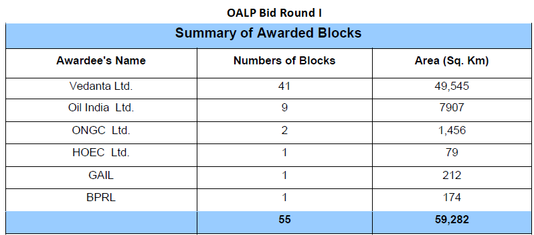
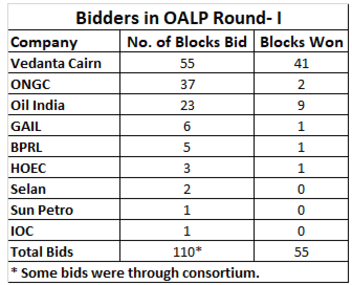
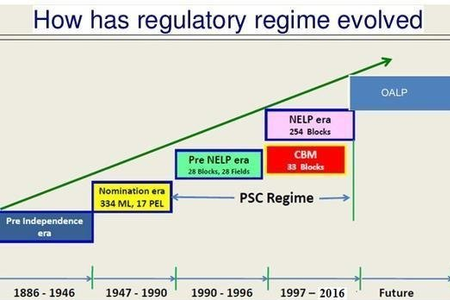
Lorem ipsum dolor sit amet, consectetur adipiscing elit. Ut elit tellus, luctus nec ullamcorper mattis, pulvinar dapibus leo.

